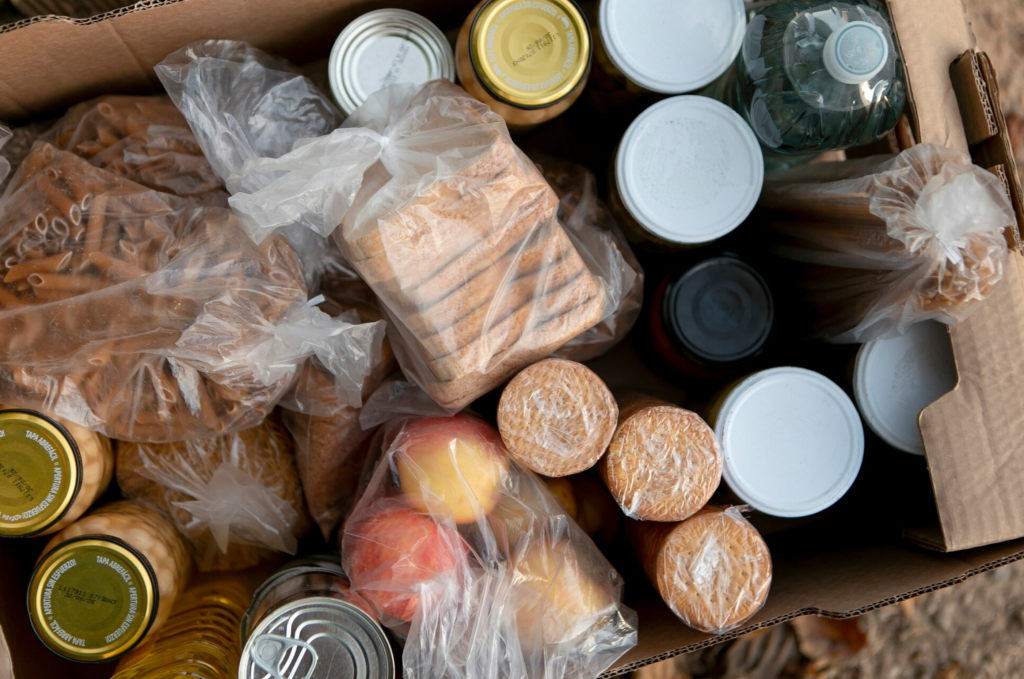🥫 Introduction: More Than Just a Wrapper
When you pick up a snack or a ready-made meal, it’s easy to assume the packaging is simply for convenience. But what if the real story lies beneath the label? Increasingly, experts are raising concerns about how food packaging affects both your health and the environment—and how much of that is left off the shelf.
From chemicals that leach into food to deceptive sustainability claims, there’s a lot the food industry isn’t telling you about packaging. Let’s pull back the curtain.

🧪 Hidden Chemicals You Didn’t Sign Up For
You may be surprised to learn that the container holding your food could be just as important as the ingredients themselves. Certain materials used in packaging can leach harmful substances into what you eat—especially when exposed to heat or over time.
⚠️ Common culprits include:
- BPA (Bisphenol A): Found in some plastics and linings of canned foods; linked to hormone disruption.
- Phthalates: Often used to make plastic flexible; may interfere with reproductive health.
- PFAS (Per- and polyfluoroalkyl substances): Found in grease-resistant packaging (e.g., fast-food wrappers); dubbed “forever chemicals” due to their persistence in the body and environment.
Even “BPA-free” labels can be misleading, as alternatives like BPS and BPF may have similar hormonal effects, according to the National Institute of Environmental Health Sciences (NIEHS).
🌍 Greenwashing and the Sustainability Myth
While many companies have embraced “eco-friendly” packaging, not all claims are created equal. The terms “biodegradable,” “compostable,” or “green” are often used loosely, and without oversight.
For instance:
- “Compostable” packaging may only degrade under industrial composting conditions—not in your backyard.
- “Recyclable” packaging is often a mix of materials (e.g., plastic and foil), making it functionally non-recyclable in many local facilities.
- “Bioplastics” can sound clean and sustainable, but still don’t break down properly in marine environments or landfills.
A 2023 report by Greenpeace USA noted that less than 6% of plastic waste in the U.S. is actually recycled, highlighting how packaging is more problem than solution.
🏷️ Misleading Labeling: What You’re Not Being Told
Beyond sustainability, food packaging is often a vehicle for misinformation. Product labels can distract consumers from what really matters.
Watch out for:
- “Natural” claims that aren’t regulated by the FDA.
- Serving sizes manipulated to make nutrition facts look better.
- Healthy imagery (e.g., fruit pictures) used even when the product contains no real fruit.
According to a 2019 study in Nutrients, visual and textual packaging elements can distort consumer perceptions of a product’s healthfulness, even when its actual ingredients tell a different story.
📦 Convenience Over Caution
Ready-to-eat meals and on-the-go snacks often come with packaging that prioritizes efficiency and shelf-life—not health or environmental responsibility.
While convenient, these packages often contain:
- Multiple plastic layers, making them difficult to recycle
- Additives to preserve freshness that aren’t always disclosed
- Microplastics, which have been detected in bottled water and food containers
A study by Frontiers in Chemistry (2021) found microplastic contamination in everything from seafood to salt, much of it linked to food processing and packaging materials.
🛒 What You Can Do as a Smarter Consumer
While it may feel overwhelming, being aware of food packaging pitfalls empowers you to make better, safer, and more ethical choices.
✅ Tips for conscious shopping:
- Buy in bulk when possible—less packaging, fewer contaminants.
- Avoid heavily packaged ready meals—opt for whole or fresh foods.
- Choose glass or metal containers over plastic where available.
- Read between the lines on “green” claims—look for third-party certifications.
- Use reusable bags, jars, and wraps to store your own food safely.
You can also check for packaging rated safe by organizations like EWG (Environmental Working Group) or support brands that practice full supply chain transparency.
🔮 The Future of Food Packaging: What Needs to Change
Thankfully, innovation is happening. Companies and scientists are developing truly compostable materials, edible wrappers, and even smart packaging that changes color if food goes bad.
But systemic change requires more than tech—it needs:
- Stricter regulations around what chemicals can be used in food packaging.
- More accountability from brands about the true lifecycle of their materials.
- Consumer demand that pushes for transparency and sustainability.
As consumers become more informed, the food industry will have to move from secrecy to sustainability—or risk falling behind.
💬 Final Thoughts
Food packaging isn’t just a box, bag, or bottle—it’s a silent influencer on your health, habits, and the planet. And as more information comes to light, it’s clear that the food industry packaging secrets deserve greater scrutiny.
So next time you’re in the grocery aisle, don’t just read the label—look at the packaging too. Because what surrounds your food may be just as important as what’s inside it.
📚 References
- National Institute of Environmental Health Sciences (NIEHS). BPA Health Effects
- Greenpeace USA. Plastic Recycling Rate Declines
- Nutrients. (2019). Consumer Perception of Packaged Foods
- Frontiers in Chemistry. (2021). Microplastics in Food






